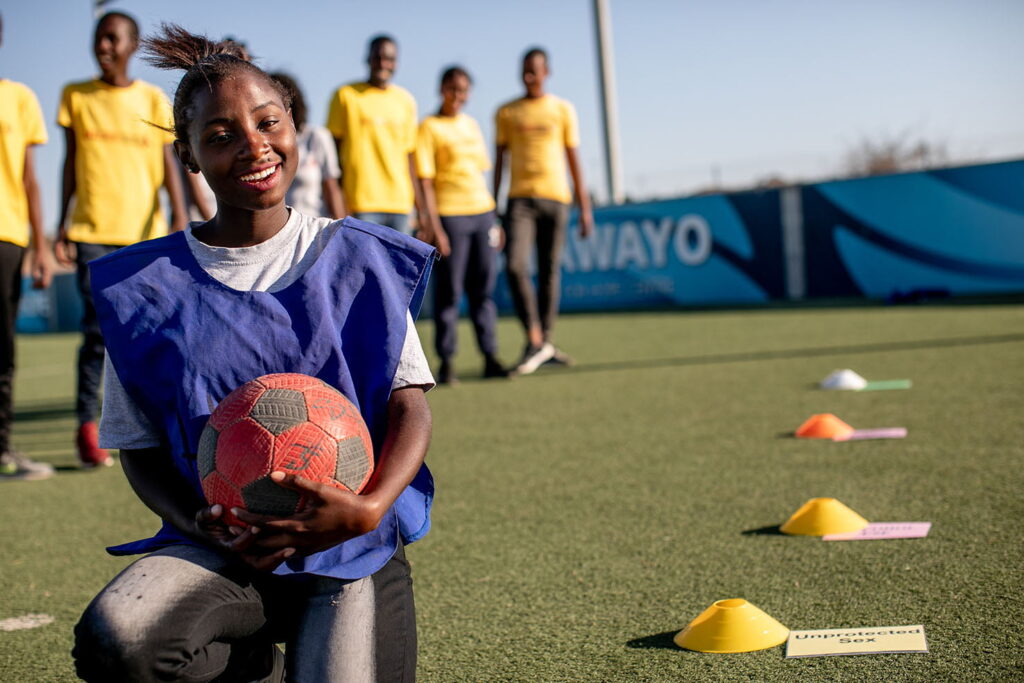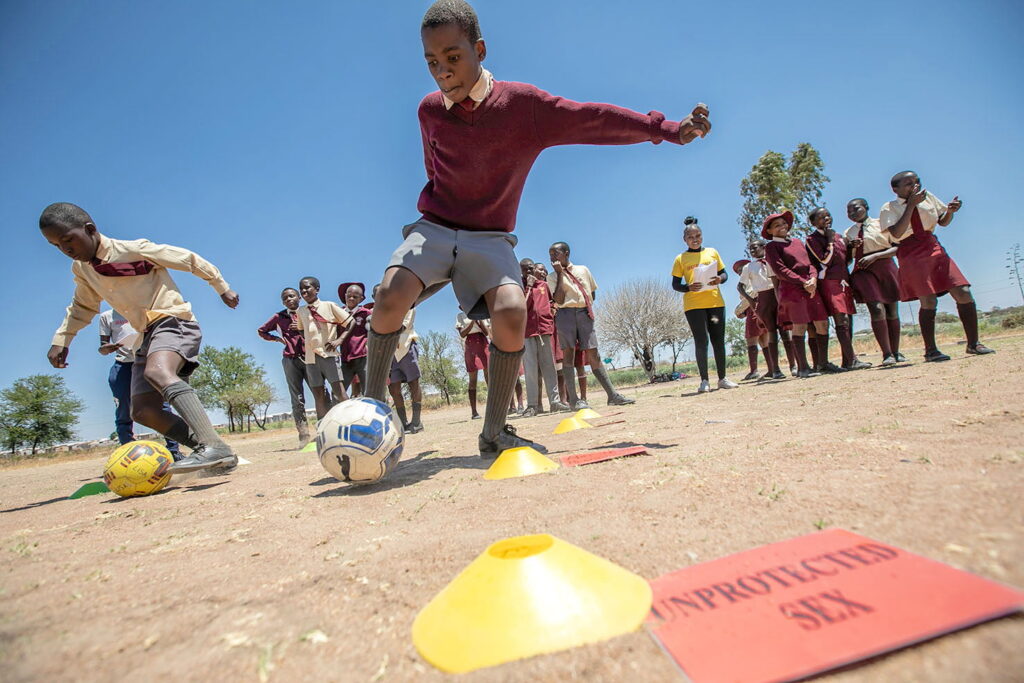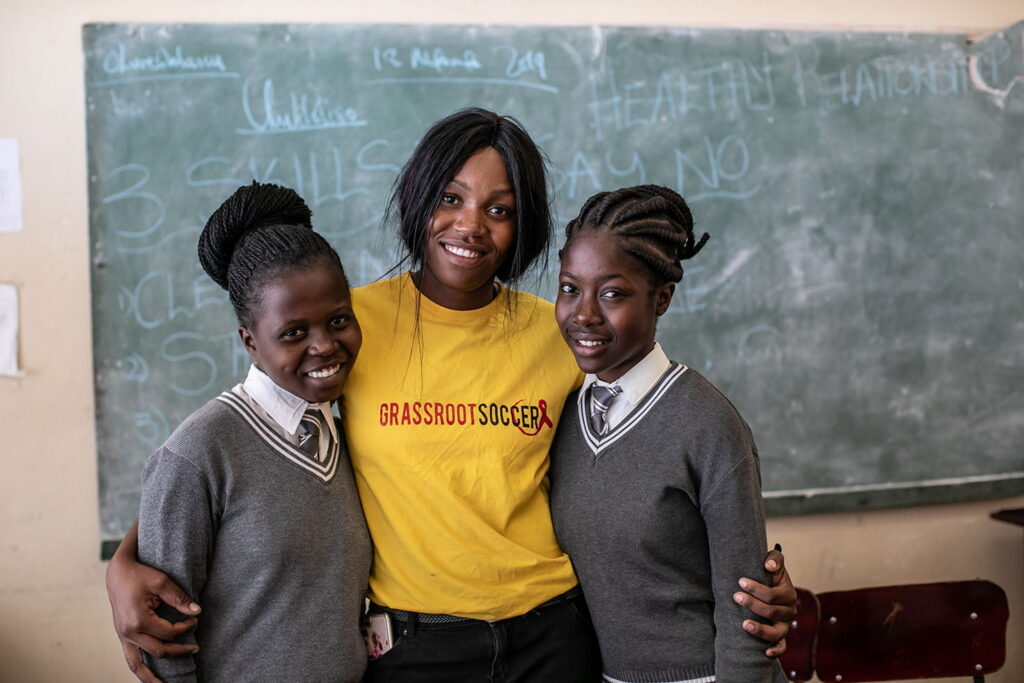Curriculum, Coaches, and Culture Combine to Change the Game

Adolescents, particularly in Africa, are among those hardest hit by the AIDS epidemic, but they can also be the greatest force for change. In order to achieve their potential and have a healthy future, adolescents need information, mentors, and access to health services to thrive. So what does a soccer ball have to do with this?
Adolescence is a simultaneously exciting and tricky time, and the adolescent brain, particularly the frontal cortex, is still developing; this means adolescents are more likely to engage in risky behaviors and less likely to consider the consequences.
This is where Grassroot Soccer comes in. Our programs leverage the universal appeal of soccer as the platform to reach adolescents during this critical time. A question that often arises is “How exactly do you use soccer?” The answer: using soccer as the hook, we engage adolescents in making healthy decisions through our Three C’s: an adolescent-friendly and evidence-based health Curriculum, the supportive influence of local mentor and role model Coaches, and a fun, inclusive, and positive Culture.
Critical to any effective health education program is a well-constructed curriculum. By ensuring our curricula are evidence-based, and both culturally and age-appropriate, we are able to most effectively provide adolescents with key information, and the confidence to use it, at the right time.

For example, consider the activity “Risk Field”. Participants divide into relay teams and dribble through a series of cones, each one marked with a risky behavior, such as “Alcohol and Drugs” or “Multiple Partners”. Hitting a cone means you incur some kind of consequence, such as doing push-ups. On round two, hitting a cone means your team incurs the consequence; by round three, hitting a cone means the whole class incurs the consequence. This is all a metaphor, explained clearly by the Coach, for how individual risky behaviors can cause consequences for you, your family, and your whole community.

A message is only as effective as how it’s delivered, and that’s why the second “C”, Coaches, is so important. Local young adults, they are trained to be both health educators and caring mentors. Adolescent participants feel comfortable with their Coach, as someone they can talk to and learn from. One particular example of this is our support intervention and clubs for HIV-positive youth, which are led by HIV-positive Coaches. By sharing their own personal journey with stigma, disclosure, and adherence, these Coaches have a deeply profound effect on participants who are going through all of this in the moment.

Last but not least, there is Culture, which Grassroot Soccer defines as creating an environment conducive to vital conversations, safe spaces, and fun. When considering topics like HIV, AIDS, and sexual and reproductive health, adolescents need a place where they can speak openly and ask questions without fear of judgment. At the same time, by making the learning fun, they are more likely to feel comfortable and excited to participate.
When it comes to using soccer as a hook with adolescents, it’s all about meeting them where they are. Toss out a soccer ball anywhere in the world and you’ll find youth ready to play. Through thoughtful use of the Three C’s, this becomes much more; it becomes a true gamechanger in the effort to tackle HIV/AIDS.